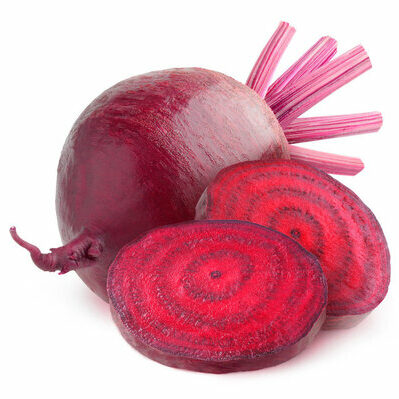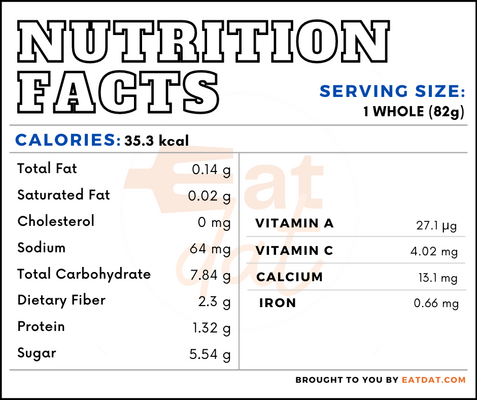
Beetroot
also known as Beets, Table beet, Garden beet, Red beet
What is a Beetroot?
Beetroot is a root vegetable belonging to the Beta vulgaris family of plants, grown for their edible taproots and leaves. The name of the vegetable comes from a mixture of Latin and Old English: Latin for beetroot, beta, and the same word in Old English, rot. This vegetable has a distinct purplish red color, which it lends to every dish.
- Its earthy and bitter flavor comes from the geosmin compound that is produced by microbes.
- This vegetable is popular raw in juices or salads, as well as baked and roasted.
Common ways to use beets in the kitchen include:
- Pickled
- Roasted
- Smashed
- Sandwiches
- Soup
- Slaw
- Salad
- Dips
- Cakes
- Smoothies
- Juices
Origin of beetroot
This vegetable may have originated in the Mediterranean region, and the earliest archeological records place it in Aartswoud in the Netherlands during the Neolithic Age. Additionally, evidence of beet consumption was found in the Saqqara tomb in Egypt dating back 5,000 years. Mesopotamia, Ancient Greece, and Ancient Rome also appreciated the vegetable. They were originally cultivated for the greens but the root itself was often used to give a red color to wine, broths, and salads. The root resembled a carrot at this time, and the modern version only appeared in Europe in the 15th century. Later, the sugar beet was developed in the 1700s in Prussia.
Nutrition
Nutritional profile for beetroot (1 whole, raw):

Beetroot is rich in potassium, sodium, folate, and betaine. Also, it contains calcium, magnesium, phosphorus, vitamin C, choline, vitamin A, and carotene.
In addition, the nitrates present in this vegetable are beneficial for cardiovascular health. Regular consumption may also help in minimizing the risk of hypertension, atherosclerosis, diabetes, and dementia. Moreover, it may assist in reducing oxidative stress, inflammation, and blood pressure. These vegetables also keep the kidneys healthy and prevent renal diseases, and may help limit liver diseases, cancers, and chronic respiratory diseases.
Commercial production
Russia is the main producer of this vegetable, followed by France, the USA, Germany, Turkey, Ukraine, Poland, Egypt, China, the UK, and Iran.
Beetroot requires cool weather and grows best in loamy soils without much acidic content. The farming is done through the sowing of seeds. Some of the harvesting can be done in around nine weeks from the sowing. At this stage, the roots are still tender. Then, the remaining harvest is done when the roots grow into full maturity. Finally, they are washed and packed properly.
These vegetables remain fresh in the refrigerator for up to one week. Sprouted beets must be consumed first, as that is the first step into decay.
Beetroot recipes
It can be consumed raw, boiled, or baked. They bring both color and flavor to cooked dishes, and taste best when combined with sweet and fresh flavors. Here are a few recipes to try:
- Tikki
- Raita
- Risotto
- Salad
- Gnudi
- Beet Pesto Pasta
- Remolachas a la Sevillana
- Salmorejo
- Pickled Beet and Eggs
- Mutabbal Shawandar
- Puffs
- Beetroot Relish Burger
FDA regulations
Beetroot is classified as produce that is rarely consumed raw. Dehydrated beet or beet powder is classified as a dark red powder prepared by dehydrating sound, mature, good quality, edible beetroots. The standards and grades for this vegetable are set by the USDA.
References
History of Beetroot – Historical Uses of Beetroots, Vegetable Facts, http://www.vegetablefacts.net/vegetable-history/beetroot-history/
Chintu Das, All you need to know about Beetroot Cultivation, Krishi Jagran, https://krishijagran.com/agripedia/all-you-need-to-know-about-beetroot-cultivation/
Clifford, Tom et al. “The potential benefits of red beetroot supplementation in health and disease.” Nutrients vol. 7,4 2801-22. 14 Apr. 2015, doi:10.3390/nu7042801, https://www.ncbi.nlm.nih.gov/pmc/articles/PMC4425174/
Chen, Liping et al. “Beetroot as a functional food with huge health benefits: Antioxidant, antitumor, physical function, and chronic metabolomics activity.” Food science & nutrition vol. 9,11 6406-6420. 9 Sep. 2021, doi:10.1002/fsn3.2577, https://www.ncbi.nlm.nih.gov/pmc/articles/PMC8565237/
